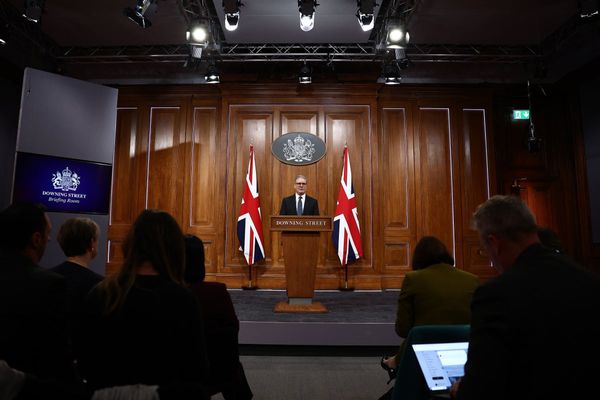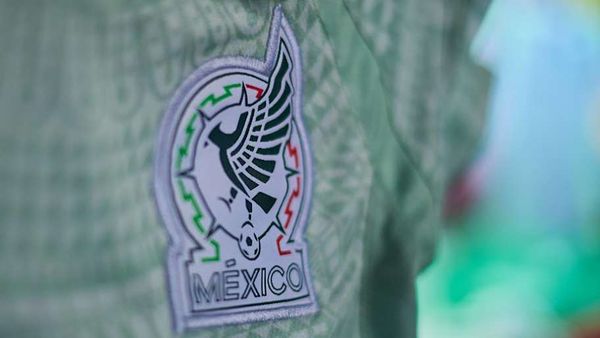Every night for five weeks in 2021, the London-based Australian journalist Lucia Osborne-Crowley set her alarm for 1.30am and made her way through the New York snow to the Thurgood Marshall United States Courthouse in Lower Manhattan.
Always one of the first in line, she would eventually be joined by more journalists and civilians who were interested in seeing Ghislaine Maxwell’s sex trafficking trial up close. As the sun came up, they would sip their coffees and shuffle on the spot to keep warm, striking up conversations that would blossom into lifelong friendships.
Only four reporters were allowed into the courtroom each day, making that middle-of-the-night wake-up call all the more important as the trial went on and garnered more interest. After missing the first day because of a last-minute change of location, Osborne-Crowley never lost her seat again.

Ghislaine Maxwell, a former socialite, was on trial for facilitating the sex trafficking of minors for her ex-boyfriend, business associate and best friend, the disgraced financier and sex offender Jeffrey Epstein who died in prison a year before Maxwell was arrested. She was convicted of five out of six counts of sex trafficking of minors and is serving 20 years in prison.
For Osborne-Crowley, witnessing this trial up close was more than a matter of professional integrity. Yes, as a trained lawyer and legal reporter, she wanted to be there when justice was surely served. But as a survivor of child sexual assault, she also deeply understood the victims and knew she was the one who could tell their stories. Early on, she made the decision to write The Lasting Harm, which comes out today, about the women who were subject to Maxwell’s abuse rather than Maxwell herself.
“This is not a book about Jeffrey Epstein, and it’s not even really about Ghislaine Maxwell, although she is present, obviously,” says Osborne-Crowley. I’ve called her in London where she’s back at home preparing for the start of a book launch media blitz. “The space in this book: I get to choose what’s in it, and what I’ve chosen is to give that space to the voices of the victims.
“We often fall into the trap of giving far too much oxygen to perpetrators and not enough to victims,” she continues. “[From a cultural perspective,] we’ve become really interested in perpetrators and how they work and why they do what they do, and that is important, but ultimately we’re doing that at the expense of telling the real stories of the victims, even if we don’t consciously think that’s what we’re doing.”
Instead of delving into Maxwell’s psyche or analysing her upbringing, Osborne-Crowley’s book focuses on the four women who testified: Carolyn, Annie, Jane and Kate. We’re introduced to them in the moments before they meet Maxwell all those years ago and the courses of their lives are irrevocably changed. We’re in the room when they see Epstein for the first time, we’re there when they try to escape, and we’re there when they have no choice but to go back.
The detail Osborne-Crowley is able to reveal is a testament to her trauma-informed journalism and interview style. “That meant sitting down with them over the course of years and working together to pull together a series of chapters about what it was actually like day by day in their lives, both as the children and the teenagers being trapped by Jeffrey and Ghislaine: what it actually felt like, what actually happened to them. I want people to know what happened to those teenagers and what’s happened to them in the 30 years since.”
During the trial and in her conversations with Maxwell’s victims (she reports that there are many more than appear in the book) in the years that followed, Osborne-Crowley recognised
many similarities between their experiences and her own. Osborne-Crowley was groomed by her gymnastics mentor from the age of nine and was violently raped by a stranger at knifepoint when she was 15, leaving her with chronic pain among other PTSD symptoms. Like the women in this book, Osborne-Crowley experienced substance abuse, eating disorders, addiction to abusive relationships and chronic self-harm.

“One of the things I was able to talk to these women about, and that was infuriating for all of us, was that child sexual abuse is an epidemic. This kind of abuse is completely ubiquitous, and there’s a playbook for people who manipulate and sexually abuse children,” she says.
“They have a set of tactics that they use that create symptoms of trauma like fragmented memory, delayed disclosure, shame, and inability to come forward because of fear of stigmatisation. And then those exact things are used against us when we come forward. It’s unbelievably unfair.”
In The Lasting Harm, Osborne-Crowley shows how the trauma symptoms that come from being abused as a child are used against survivors when they speak out as adults. Not only have they been harmed by their abusers, but in finally sharing what happened to them, they are harmed again by a society so desperate to believe that the world could not possibly contain such debasement that they’ll go to any lengths in their minds to discredit survivors.
Even in the courtroom, Osborne-Crowley was surrounded by people who disbelieved the four women in the witness stand. “It was really quite shocking. We would leave the room and it was like we had heard completely different evidence,” she says. There are powerful moments in the book when Osborne-Crowley describes trying to educate those around her on the effects of child sexual abuse.
“No victim is doing this for fun. No victim is doing this for attention,” she says she tried to tell them. “Those things are completely unrealistic and untrue. If you are someone, or have ever met someone who has been through anything like this, you know there’s no upside for us. It’s so retraumatising to get up and have to tell these stories again and again.”
“I want people to understand just how difficult it is to survive this kind of thing,” she continues. “And that doesn’t mean surviving the act itself; it means surviving every single day that comes afterwards.”
Osborne-Crowley writes that while she was working on the book, she was twice admitted to a rehab facility for her own mental health. She tells me that working with the women for this book was helpful in her own healing.
“I’ve learnt so much from these women about courage and resilience and joy. These are people who have had unimaginably terrifying things happen to them over and over again – they’ve lived through hell in a way that most people will be lucky enough to never experience. They’ve seen the darkest parts of how human beings can operate and they are still able to find joy and not only survive but find ways to live these full lives. They taught me how to do that myself. They taught me a lot about recovery and about having the courage to be happy and to believe in people and to trust people in the way they were able to trust me.”
Buy The Lasting Harm by Lucia Osborne-Crowley

This article originally appeared on Marie Claire Australia and is republished here with permission.







